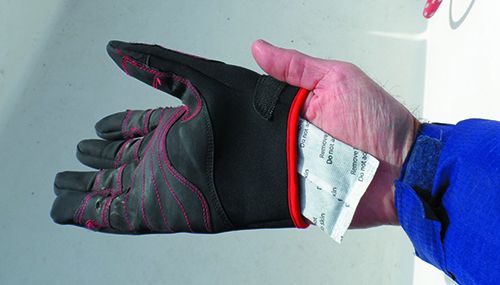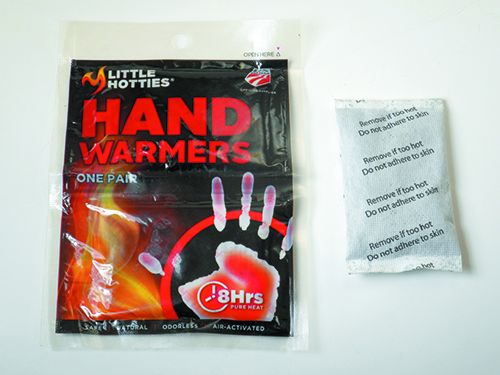Puffy gloves are warm but you can’t do anything. I’ve used the greatest super-warm gloves ice climbing in the New Hampshire winter. Sub-zero temperatures and running water are a real test. They were warm, dry, impeccably made… and felt like boxing gloves. I could swing the ice axes fine, but tying knots and clipping carabiners was unacceptably clumsy when clinging to an axe with one hand and balancing on crampon points.
I quickly converted to leather-faced windblocker fleece gloves under the Patagonia Stretch Triolet shells described in this review. To that system I added disposable hand warmer packs on sub-zero days, which lasted 8-12 hours as long as they were kept in the oxygen-depleted environment of a Gore-Tex glove. (Note: they really do NOT work inside a knit glove or sailing glove. The glove does not retain the heat and they burn out in a few hours because of excessive oxygen availability.)
This combination provided superior dexterity and warm fingers during 10 days of climbing that were constantly below zero, and really cold in the mornings and on the summits.
Like sailing, I was constantly handling ropes, tying knots, and clipping carabiners, and with a few hundred feet of air under your feet, dexteritymatters. On warmer days (above zero) I would climb with just the liners and the heat packs. You can buy a lot of hand warmers for the price of the ultimate glove.
We’re not fond of hand warmers for jackets (one more layer provides more comfort) or shoes (they interfere with the fit and can become too hot).
Please see “Hand Warmers,” Practical Sailor, April 2003 for a detailed review.
HotHands Hand Warmers. About $0.70/pair if you buy a box.

For maximum warmth, hand warmers go on the palm.

Hand warmers can allow thinner gloves to work in colder temperatures so long as the glove is wind-proof.































